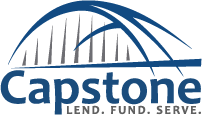How to Calculate ARV: A Simple Step-by-Step Explanation
After-repair value, or “ARV,” is of top importance to hard money lenders. Learn more about ARV and why it matters.
Real estate developers, builders, and house flippers can obtain quick financing from a hard money lender without having to jump through all the hoops that banks usually require. Hard money lenders tend to look at the value of a property - not the prospective borrower’s creditworthiness - when evaluating a loan application.
Borrowers looking for a loan for a renovation or fix-and-flip project therefore need to consider the estimated “after-repair value” (ARV) of the property they intend to purchase. Hard money lenders use ARV to determine how much they are willing to lend.
Read more: Capstone Capital Partners’ Lending Parameters
What is ARV?
ARV stands for “after-repair value”. It’s an estimate of how much a property will be worth once an improvement project is completed.
Hard money lenders want to know your property’s estimated ARV. They can help you calculate it. But the number is important to you, too. It gives you an idea of how much money you could earn from the project.
ARV is not a precise measurement since no one can know the future with certainty. It’s more like an educated guess based on properties similar to how you expect yours to be once the project is complete.
Calculating the value of the renovations depends on more factors than anyone could easily count. Calculating ARV with some precision requires research into comparable properties, or “comps.” Once you have an idea of what the comps are worth, you can calculate your property’s ARV with more confidence.
Read more: Top 5 Home Renovations for Big ROI in Austin, Texas
Step 1: Estimate your property’s as-is value
First, you have to determine what your property is currently worth, also known as the “as-is value.” A professional real estate appraiser can help you with this.
Let’s assume that you’ve found a 3,000-square-foot property in need of some renovations with an as-is value of $350,000, or $116.67 per square foot. That’s before you start your project.
Step 2: Estimate the cost of the planned renovations
Photo by Annie Gray on Unsplash
At this point, you don’t know the value of the repairs that you’re going to make to your property, but you can estimate how much the project will cost. These costs may include:
Materials
Contractors and subcontractors
Operating expenses for the property, including utilities and insurance
Property taxes
Closing costs and other expenses associated with buying and eventually selling the property
You want the difference between your property’s as-is value and its ARV to be greater than the amount of money the project will cost you.
Step 3: Find comparable properties
You should identify three to five comparable properties (“comps”). Comparability is based on numerous factors. Here are a few universal factors that feed into finding good comps:
Location: Your comps should be located in the same neighborhood, or within no more than one mile of your property.
Characteristics: The comps should be as close as possible to the same age as your property, but no more than ten years older or younger. They should have similar lot size, square footage, number of stories, and number of rooms.
Bedrooms and bathrooms: Comps should not have close to the same number of bathrooms and bedrooms as your property.
Date of sale: Comps must have sold no more than six months earlier, but ideally no more than 3-4 months. Real estate prices can fluctuate quickly.
Please note that these are the minimum requirements for assessing comps. You want to compare as many features as possible, including the amount of parking, type of HVAC system, and amenities such as decks, sheds, and swimming pools.
Photo by Paul Hanaoka on Unsplash
Once you’ve found comps, you should make a chart to compare all the features side-by-side. The sales prices can give you an upper and lower range for your ARV. Here’s an example showing only a few features of each comp:
| Comp 1 | Comp 2 | Comp 3 | Comp 4 | |
|---|---|---|---|---|
| Square footage | 3,050 | 3,100 | 2,975 | 3,215 |
| Lot size | 0.40 acre | 0.35 acre | 0.37 acre | 0.42 acre |
| Sale price | $870,000 | $750,000 | $910,000 | $940,000 |
| Price per square foot | $285.25 | $241.94 | $305.88 | $292.38 |
Step 4: Calculate the ARV (example)
Using the chart that shows all of your comps with their sale prices, it’s time to do some math.
Average price per square foot of the comp properties
The average price per square foot of the comps shown above is $281.36.
Multiply the average price per square foot of the comps by the square footage of your property
Your property is 3,000 square feet. Multiply that by the number you just calculated, and you have $844,080. This is a big step up from the property’s as-is value of $350,000.
Why does ARV matter when applying for hard money loans?
Hard money lenders often use a property’s ARV to calculate the amount of the loan they’re willing to give.
A hard money lender may offer loans “up to 70% ARV.” For the hypothetical project above, 70% of the ARV is $590,856.
Find out more
A hard money loan from Capstone Capital Partners can provide you with fast and flexible financing for your real estate projects in Texas. Applying is easy, and you can expect friendly service from start to finish. Get started on a free pre-approval!



